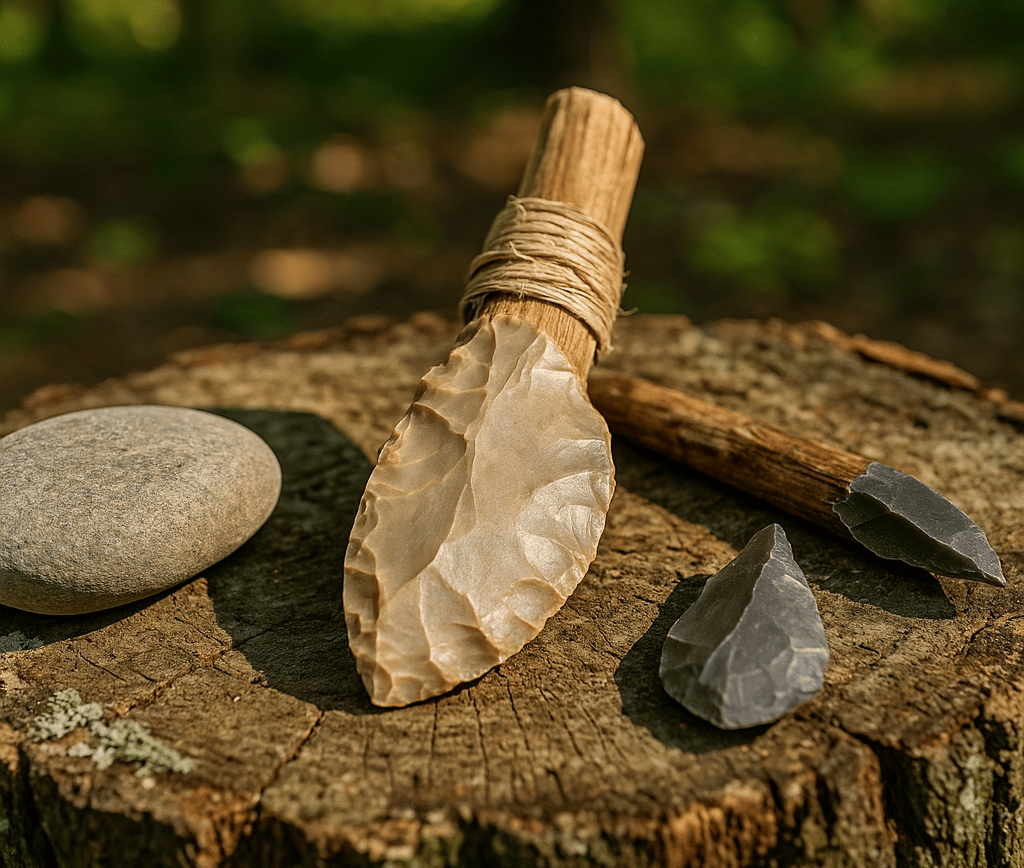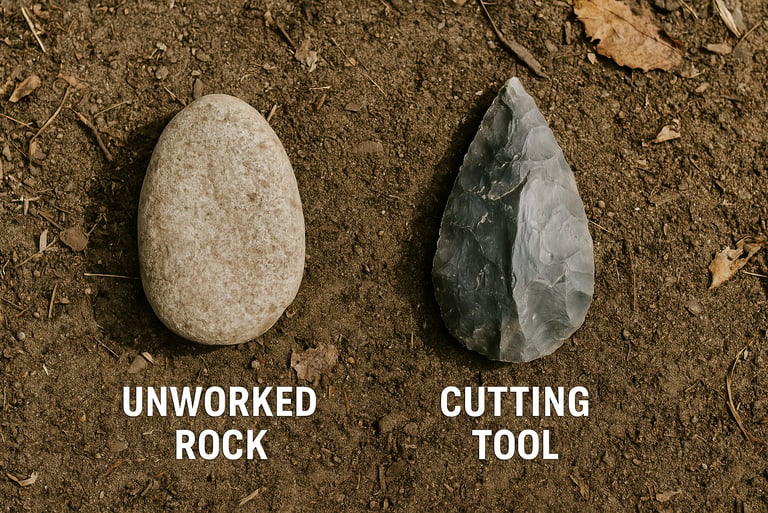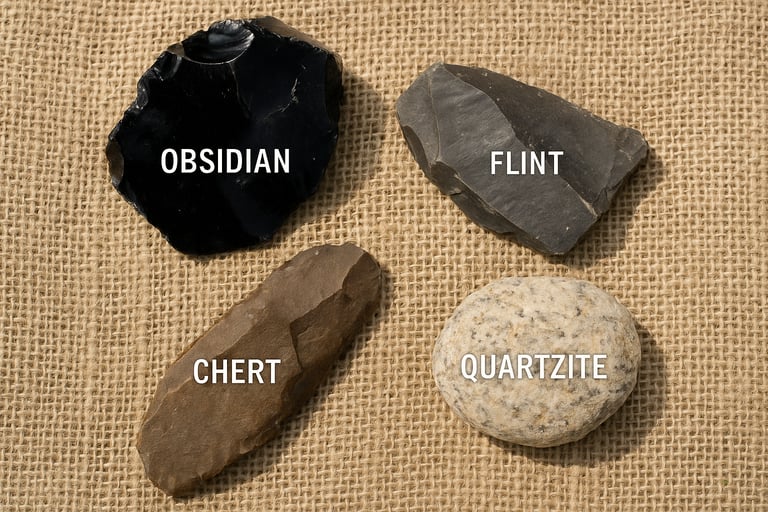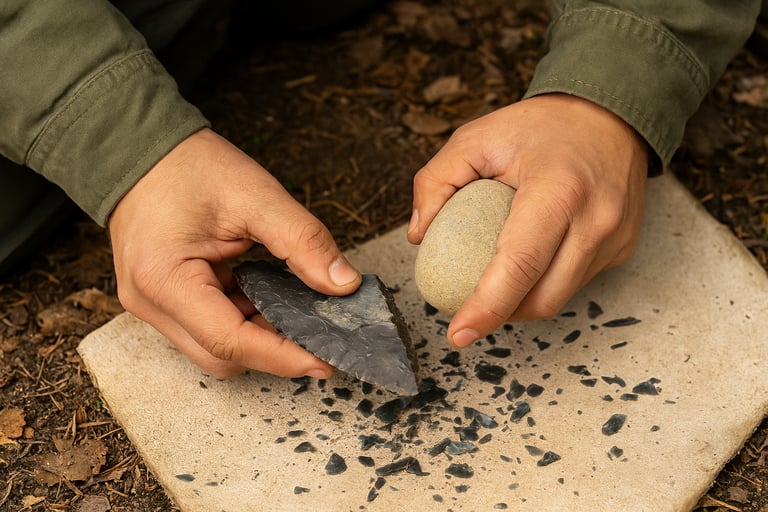Stone Tools for Survival: How to Make Simple Cutting Tools in the Wild
Learn how to make stone cutting tools in the wild using flintknapping and natural materials. This beginner’s guide to primitive stone tools covers how to identify the right rocks, shape sharp edges, and use these tools for survival.


Stone Tools for Survival: How to Make Simple Cutting Tools in the Wild
Survival isn’t always about high-tech gear, sometimes it’s about getting back to the basics. And few things are more basic, or more effective, than a well-made stone tool. Long before metal blades and folding knives, our ancestors shaped rocks into sharp-edged tools to cut, carve, butcher, and survive.
In this guide, you’ll learn how to identify the right types of stone and how to make cutting tools that actually work — using only natural materials you can find in the wild.
Why Stone Cutting Tools Still Matter Today
Even in a modern survival situation, stone tools can be a game changer. You might lose your knife, or your gear might fail. Knowing how to break a rock and shape a usable blade could save your life.
Stone tools can be used for skinning animals, scraping hides, slicing plants, shaving wood, or even digging. They don’t require fancy equipment — just the right rock, a little patience, and a good understanding of what makes stone fracture in useful ways.
This knowledge is especially valuable for wilderness survivalists, bushcrafters, and off-grid preppers who want real self-reliance.
The Best Types of Stone for Primitive Cutting Tools
Not all rocks are created equal. To make cutting tools, you need stones that fracture predictably and create sharp, thin edges. This process is called flintknapping, and it works best with what are known as conchoidal fracturing rocks.
The best types of stone for survival cutting tools include:
Flint or chert – Sharp, reliable, and widely used in prehistoric times.
Obsidian – Volcanic glass that produces extremely sharp edges but is brittle.
Quartzite – Tough and versatile, found in many forest and riverbed areas.
Basalt or slate – Useful if sharper stones aren’t available, but harder to shape.
Look for stones that feel dense, break cleanly, and have a glassy or waxy surface when fractured. Riverbeds, exposed cliffs, and dry creek beds are great places to search.
How to Shape a Cutting Edge Using Natural Tools
Once you’ve found a good rock, the next step is shaping it. You don’t need metal tools, you can use other rocks or antler pieces as hammers and pressure flakers.
Start by holding your stone securely and striking the edge with a harder rock at an angle. You’re trying to flake off small, controlled chips and create a sharp ridge. This technique is called percussion flaking. For finer shaping, use bone, antler, or even a hardwood stick to press flakes from the edge — known as pressure flaking.
Always wear hand protection, even if it’s just bark or leather wrapped around your fingers. Stone flakes can be razor-sharp and dangerous.
Once the edge is thin and sharp, you’ve got a usable tool. You can refine it further into a knife shape, a scraper, or even a spear point, depending on your needs. Stone blades also pair well with primitive handles and bindings when making full DIY survival tools in the wild.
Using and Maintaining Stone Cutting Tools in the Field
Stone blades won’t last forever, but they’ll get the job done. You can use them to butcher small game, shave bark from branches, or prepare fire materials. For carving wood or food prep, a properly made flint knife can rival a steel blade, it just requires more frequent touch-ups. Once you've crafted a stone blade, knowing basic knife skills makes it even more effective — whether you're slicing, carving, or prepping other materials.
Store your finished tools in a wrap of bark, hide, or cloth to keep the edge protected. You can also weave a small natural basket for carrying flint shards and finished tools safely. If it breaks, don’t panic, many tools can be re-flaked or reshaped multiple times.
Learning Stone Toolmaking Is a Skill You’ll Never Regret
Mastering the basics of primitive stone cutting tools connects you with the oldest survival technology on Earth. It’s empowering to know that with nothing but rocks, you can create blades, scrapers, and survival tools that get the job done.
It may take a few tries, but this is a skill that lasts forever. Once you understand how stone breaks and how to control it, you’ll always be just a few flakes away from your next blade, no matter where you are.
Let the forest be your workshop. Survival is about resourcefulness, and few resources are more universal than stone.






© 2025. All rights reserved About | Privacy Policy | Terms and Conditions | Affiliate Disclosure | Disclaimer


